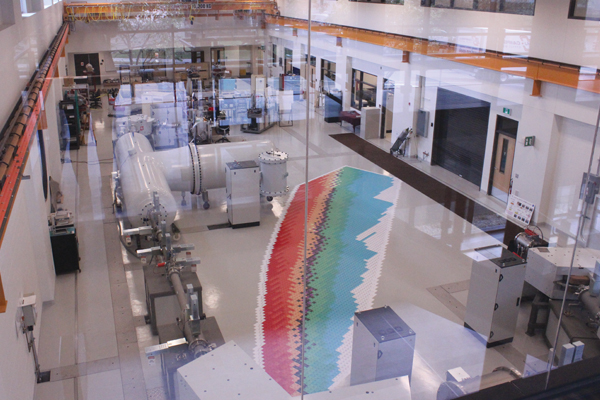Projects to address environmental issues from across Canada
Photo: Nadia Drissi El-Bouziaidi
Three University of Ottawa professors will share a $1.9-million grant from the federal government to support research on environmental risks.
Jules Blais and Vance Trudeau, both from the biology department, and Jack Cornett, from the earth science department, will use the grant for a three-year research project.
The grant, supplied by the Natural Sciences and Engineering Research Council of Canada (NSERC), is part of the yearly Strategic Projects Grant competition. Seventy-eight research teams received a combined total of $38 million.
Scientists have previously brought attention to the lack of funding for environmental science research. Last October, the United States-based Union of Concerned Scientists collected 800 signatures for an open letter saying “a rapid decline in fees and funding” for Canadian science makes innovation and communication difficult.
Blais said environmental issues warrant more attention than they currently receive.
“In Canada, there are almost what I would call targeted strikes against environmental research, especially at the government level,” he said, adding that funding cuts to departments like Parks Canada, Environment Canada, and the Department of Fisheries and Oceans have been detrimental to research capacity.
Cornett said environmental research has its ups and downs in terms of financial support, and that these days it’s at a low point.
“The onus is on us scientists to show why our work is important and why we do it,” he said.
Gold mines in the Northwest Territories
Blais will use his $570,000 grant to explore the effects and risks to the environment of gold mines in the Northwest Territories.
His team will focus on the Giant Mine near Yellowknife, which operated from 1948 to 2004 and has lots of arsenic in its vicinity. Arsenic can’t be destroyed once in the environment, so its toxic effects spread increasingly through the ecosystem.
A pilot study showed arsenic distribution within 15 kilometres of the mine exceeds the probable effect levels for protecting aquatic life, as set by the Canadian Council of the Ministers of the Environment. Yellowknife is only six kilometres from the mine.
“People in the Northwest Territories are very attuned to this issue,” said Blais. “We’re trying to understand the long-term fate of this arsenic.”
The study will examine how arsenic leaches and diffuses through the environment, in order to provide recommendations to reduce exposure to the harmful substance.
Oil sands and amphibians
Trudeau will examine new methods of determining effects of the oil sands on amphibians and amphipods, which are shrimp-like creatures. Amphibians and amphipods are important to their ecosystems, and act as a measurement on the health of their environment.
Backed by a $609,000 grant, his team will focus on exposure rate and toxicity of chemicals present in bitumen extraction. By examining the effects of chemicals on the creatures, they can develop guidelines on toxicity and sustainability of the oil sands.
While the oil sands are a boon for the Canadian economy, the effects on the environment are controversial. Bitumen extraction affects land, water, greenhouse gases, and tailings ponds, so sustainability and monitoring toxicity levels are important.
Finding a needle in a radioactive haystack
Cornett will use the accelerator mass spectrometer (AMS) in the new Advanced Research Complex and $756,000 in funding to develop new ways of measuring radionuclides in the environment.
Radionuclides are radioactive particles that can occur naturally or from human activities. Cornett explained that researchers want to measure nuclides to trace environmental processes, measure the age of objects through radiometric dating, and monitoring nuclear plants.
Cornett said the AMS is excellent at sifting through large numbers of atoms.
“The simplest analogy is to imagine standing in a 100-kilometre-square desert with billions of grains of sand, and you have to find the ones coloured blue. The AMS can locate radionuclides, the blue grains, very easily,” he said.
Using the AMS will allow Cornett’s team to measure radioactivity levels in water near nuclear plants. Consulting companies can use this data to inform and improve nuclear energy policies in Canada.





